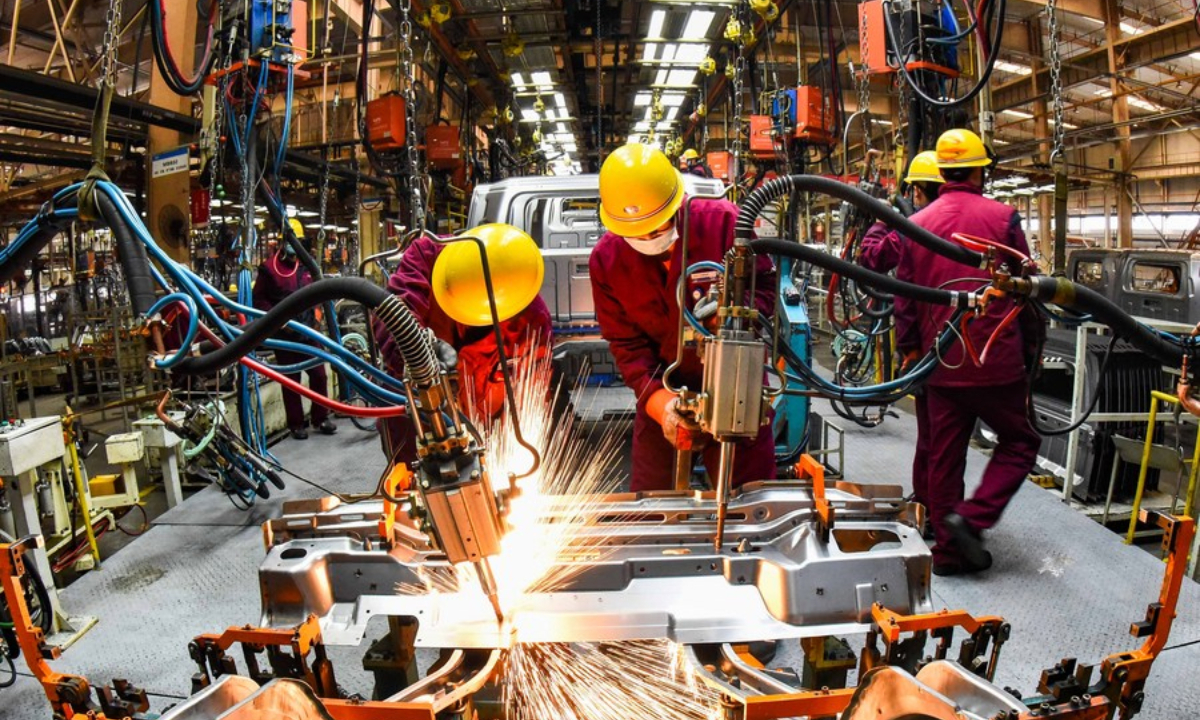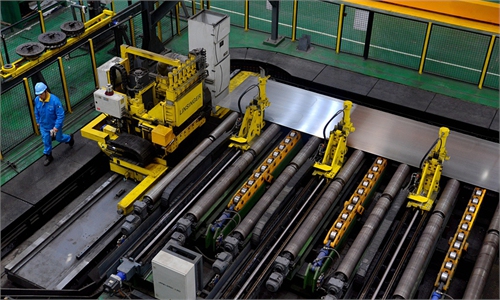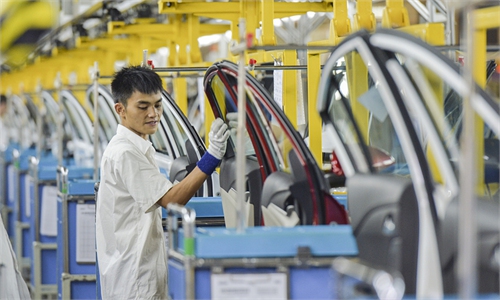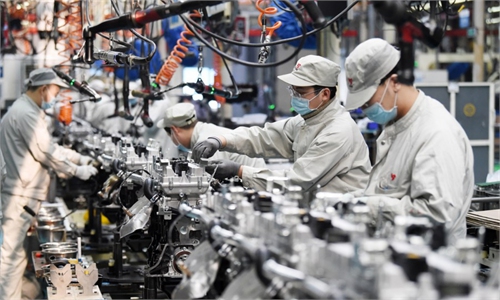China’s factory activity rebounds in May, pointing to accelerating economic recovery

Workers weld at a workshop of an automobile manufacturing enterprise in Qingzhou City, east China's Shandong Province, Feb. 28, 2021. Photo:Xinhua
China's manufacturing activity saw significant improvements in May despite continuous impact from COVID-19 outbreaks in the country, with the manufacturing purchasing managers' index (PMI) increasing more than 2 points from the previous month, according to official data on Tuesday, pointing to an accelerating economic recovery amid intensifying efforts to contain the virus and stabilize the economy.
In a fresh step to boost economic activity, the State Council, the cabinet, on Tuesday announced 33 stabilization measures, including increasing government procurement support for small businesses, enhancing financial support for infrastructure construction and major projects, and promoting the consumption of big-ticket items such as automobiles and home appliances, vowing to stabilize the national economy during the second quarter.
The official manufacturing PMI in May stood at 49.6, or 2.2 points higher than the previous month, the National Bureau of Statistics (NBS) said on Tuesday.
Zhao Qinghe, a senior NBS statistician, said that COVID-19 outbreaks and geopolitical issues had a greater impact on China's economic operations. However, with the efficient coordination between epidemic prevention and economic and social development, the country's economy recovered, Zhao noted.
The index for production rose to 49.7 in May, up 5.3 points from April, while the new orders index increased to 48.2 from 42.6.
"This showed that manufacturing production and demand have recovered to varying degrees, but the recovery momentum is still to be enhanced," Zhao said.
The PMI of large enterprises was 51.0, or 2.9 points higher than April, with the production index and new order index both higher than the overall manufacturing industry.
The indices of small and medium-sized enterprises (SMEs) remained below the 50-point mark, reaching 46.7 and 49.4 respectively.
"The SMEs were affected most by the two-month epidemic, which may weigh on the country's employment," Cong Yi, professor at the Tianjin University of Finance and Economics, told the Global Times on Tuesday.
He added that SMEs will be the focus of the government's support policies, including reducing taxes and fees and deferring payment dates.
The official non-manufacturing PMI in May rose to 47.8 from 41.9 in April. The activity index in contact-intensive sectors, including accommodation, rental and business services, remained at a low level below 40.0.
The business activity expectations index in May rose to 55.2, up 2.2 points month-on-month, indicating that as the epidemic was effectively controlled, together with the implementation of support policies to stabilize economic growth and ensure employment, the sector's confidence increased.
As China's major manufacturing hubs, including Shanghai, accelerated the pace of work resumption, suppressed production and demand will recover, said Cong.
"China's GDP is expected to expand in the second quarter, as the central and local governments' policies will inject strong confidence into the market," Cong said.
Global Times



